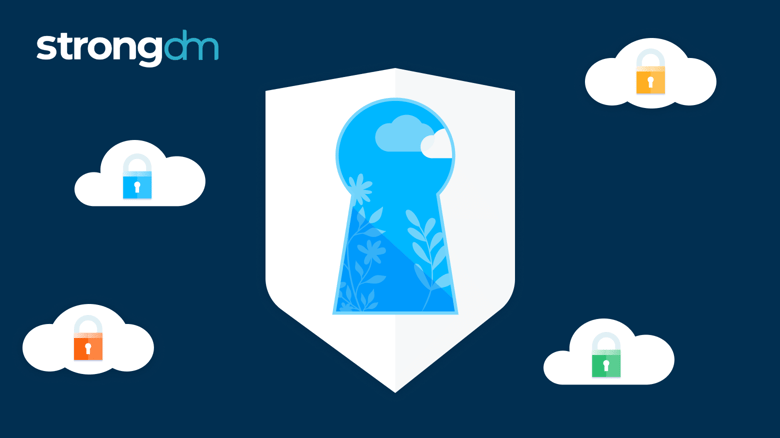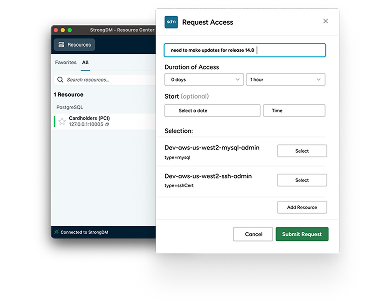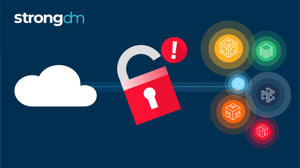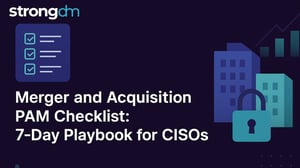Why Legacy PAM Fails in the Cloud (And the Cloud-Native Fix)


Written by
Ivan MeliaLast updated on:
October 3, 2025Reading time:
Contents
Built for Security. Loved by Devs.
- Free Trial — No Credit Card Needed
- Full Access to All Features
- Trusted by the Fortune 100, early startups, and everyone in between
Cloud infrastructure is essential for modern businesses, offering agility and scale. Yet, for many large organizations, this migration has revealed a critical failure point: legacy security solutions, especially traditional Privileged Access Management (PAM), are fundamentally incompatible with the cloud's dynamic, distributed reality.
The reality facing cybersecurity leaders is that current security tools are actively slowing down the business. Here's a look at the painful operational and financial realities:
The Painful Reality: When Legacy PAM Stalls Cloud Velocity
| Pain | The Challenge of the Legacy Model |
| DevOps & Cloud Velocity | Bottleneck: The rapid spin-up and spin-down of ephemeral infrastructure and containerized environments constantly break the security process. The access tool simply can't keep up with the speed and volume of these short-lived resources. |
| Financial & Infrastructure Burden | Tax: Managing access requires deploying many complex security proxies across the cloud, leading to significant expenses and undermining cost-saving efforts. |
| Networking & Scale Complexity | Trap: Secure, segmented networks with overlapping IP addresses make it almost impossible for central access tools to connect reliably, especially at scale. |
| Security Mechanism Failure | Password: Traditional credential rotation systems are fundamentally incompatible with complex cloud environments and fail when faced with thousands of isolated targets, blocking product adoption and stalling security goals. |
| Operational Overhead | Debt: The security team is stuck patching, updating, and writing custom scripts for tools forced into the cloud. This 'tech debt' diverts time from important projects and slows down application development. |
A Cloud-Native Playbook: The Path to Just-in-Time Access
The solution is not to double down on legacy tools, but to adopt an access layer designed for the modern era. This cloud-native playbook emphasizes eliminating standing access and embracing ephemeral nature of cloud infra:
1. Eliminate Standing Privilege with Just-in-Time (JIT)
The core security strategy must shift from provisioning permanent accounts to granting JIT access. Users should receive access for a limited time (e.g., one hour), and then have that access automatically revoked. This instantly reduces the attack surface by neutralizing dormant privileged accounts.
2. Embrace Ephemeral Authentication
Instead of managing failure-prone password rotation for thousands of accounts, the new access layer should utilize certificate-based authentication for hosts (Windows, Linux, etc.). This approach is inherently ephemeral and aligns perfectly with dynamic infrastructure, offering superior security with zero friction.
3. Implement Intelligent Access Control
The access solution should replace traditional 'bastion hosts' and intelligently route connections across complex networks. This simplifies operations for users and supports micro-segmentation without needing a large, static connection infrastructure.
4. Drive Success Through Seamless Experience
Adoption is key. The new solution must prioritize a seamless user experience, making it easier for privileged users to use the secure path than to find a workaround. For administrators, this means zero-touch maintenance—auto-updating components that eliminate the constant burden of manual patching and complex upgrades.
From Stalled Investment to Strategic Value
The reality is that you cannot secure a 21st-century cloud environment with a 20th-century security paradigm. By shifting from a compliance-first, infrastructure-heavy approach to a Zero Trust, cloud-native access layer, organizations can finally:
- Reduce risk by eliminating standing privilege.
- Cut costs by swapping costly infrastructure for scalable, efficient components.
- Accelerate cloud adoption by providing a modern, low-friction user experience.
This is the strategic playbook for turning a stalled security investment into a core driver of business success and making the security leader's job one where they can truly sleep well at night.
Why StrongDM Is the Modern Access Layer for JIT
The playbook you just read is exactly what StrongDM delivers out of the box. Unlike legacy PAM tools, StrongDM was built cloud-first, designed to keep pace with ephemeral infrastructure and hybrid environments.
With StrongDM you can:
- Eliminate standing privileges with Just-in-Time access: Engineers request access when they need it, and StrongDM automatically provisions and revokes time-bound permissions with full audit trails
- Replace passwords with ephemeral certificates and credential injection: Credentials are brokered on demand, injected directly into sessions, and never exposed to end users
- Simplify approvals inside your workflow: Access requests and approvals happen natively in Slack, Teams, Jira, or ServiceNow, so security controls never slow down development
- Scale access across any environment: Whether servers, databases, Kubernetes, or cloud consoles, StrongDM provides a single, identity-aware access layer without VPNs, jump hosts, or brittle connectors
- Prove compliance in minutes: Every query, command, and session is logged in full detail and can be streamed to your SIEM or stored for audits
StrongDM eliminates the high costs of connectors, network complexities, and maintenance burdens with a single, smart access system that speeds up cloud adoption.
The bottom line: With StrongDM, enterprises move from stalled, legacy PAM to a true cloud-native access model, one that reduces risk, cuts costs, and unlocks business agility.
Next Steps
StrongDM unifies access management across databases, servers, clusters, and more—for IT, security, and DevOps teams.
- Learn how StrongDM works
- Book a personalized demo
- Start your free StrongDM trial

Categories:

About the Author
Ivan Melia, Senior Director of Product Marketing, is a strategic leader who translates complex technology into clear, business-focused results. As a Senior Director of Product Marketing at StrongDM and a twenty-year veteran of the tech industry across organizations such as Palo Alto Networks and Cisco, he has a proven track record of successfully leading products from incubation to market scale. Ivan is passionate about creating a concise, engaging story that directly impacts the bottom line, using deep expertise in product management, sales enablement, and high-growth areas like cloud security.
You May Also Like




